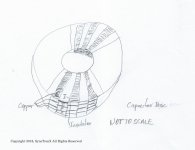Wow, this is getting way too intense!
How about some ... circuits!
"Which of these approaches is correct? For resistive loads it does not matter - both will perform identically except for the slightly lower gain of the current amp (this is easily compensated for). With loudspeaker loads, neither is ideal. Power to the load will vary widely depending on the impedance, which in turn depends upon frequency. The voltage amp will create a dip in response at each frequency where the impedance rises (and a rise wherever there is a lower impedance), and the current amp will do exactly the opposite."
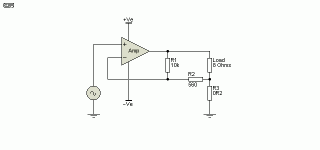
Mixed mode feedback, 4 ohm
...
...
"Many full-range loudspeakers are likely to sound better with current drive (extended bass and treble in particular), but cabinet size, internal damping and (more than likely) parallel filters have to be optimised to account for the loss of amplifier damping and to minimise peaks or excessive high frequency output."
...

Nelson I Drive Model
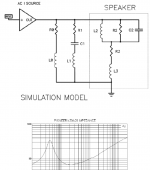
Nelson I Drive drivers
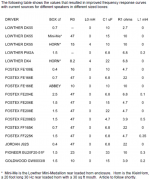
Thanks Nelson!
We need some hugs around here.
How about some ... circuits!
Joe, you may find this interesting/informative Variable Amplifier Impedance
"Which of these approaches is correct? For resistive loads it does not matter - both will perform identically except for the slightly lower gain of the current amp (this is easily compensated for). With loudspeaker loads, neither is ideal. Power to the load will vary widely depending on the impedance, which in turn depends upon frequency. The voltage amp will create a dip in response at each frequency where the impedance rises (and a rise wherever there is a lower impedance), and the current amp will do exactly the opposite."

Mixed mode feedback, 4 ohm
...
...
"Many full-range loudspeakers are likely to sound better with current drive (extended bass and treble in particular), but cabinet size, internal damping and (more than likely) parallel filters have to be optimised to account for the loss of amplifier damping and to minimise peaks or excessive high frequency output."
...

Nelson I Drive Model

Nelson I Drive drivers

Thanks Nelson!

We need some hugs around here.
Last edited:
I get it...
You colossus, guardian, or M5?
Jn
I'm a gross old fart Colossus was my model, just last night my wife and I were joking about how far back these stories go. I found one from a 1959 TV show where some decedents of shipwrecked pirates were worshiping sextants, etc. as religious artifacts.
Nah, there is a forum called 'Audio Asylum'. Odd beliefs are welcomed there.
Ya and a lot of us came from there to here to get away from it.
Hmmm.
Since a horn was used (#3652) for the most important part of music (mid-range), the directivity of it will help a lot.
Generally, the cone/dome speaker becomes more directional with freq (not constant direct)..... On-axis it does not matter but power response isnt flat.
What else is affected? The reberb time of the room is affected by the total energy put into the room.... and so you can get something like this --->
View attachment DI and Reverb.pdf
So, if you had flat near-field on-axis response (usually what is shown in speaker spec/data), with a non-flat power response, you cannot EQ the far field without messing up the near (direct) field and visa versa.
But can you actually have flat far (reverb) field response anyway? No. It is too affected by room modes, listener location and reflections etc..... The real As-Heard response is NOT smoothed. We smooth the data because we have a hard time seeing what the average is. Here is what you have when listening in far field from speakers ---->
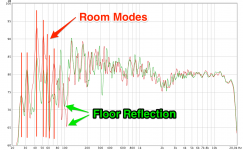 or
or
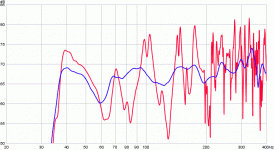 or
or
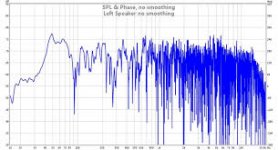
Huge variations actually exist and are not practically EQ-able.
This UNsmoothed response is what you have when Not listening near-field.
Then place music over this and try to do DBLT and decide if anything is audible?
Thx,
RNMarsh
Since a horn was used (#3652) for the most important part of music (mid-range), the directivity of it will help a lot.
Generally, the cone/dome speaker becomes more directional with freq (not constant direct)..... On-axis it does not matter but power response isnt flat.
What else is affected? The reberb time of the room is affected by the total energy put into the room.... and so you can get something like this --->
View attachment DI and Reverb.pdf
So, if you had flat near-field on-axis response (usually what is shown in speaker spec/data), with a non-flat power response, you cannot EQ the far field without messing up the near (direct) field and visa versa.
But can you actually have flat far (reverb) field response anyway? No. It is too affected by room modes, listener location and reflections etc..... The real As-Heard response is NOT smoothed. We smooth the data because we have a hard time seeing what the average is. Here is what you have when listening in far field from speakers ---->
 or
or  or
or 
Huge variations actually exist and are not practically EQ-able.
This UNsmoothed response is what you have when Not listening near-field.
Then place music over this and try to do DBLT and decide if anything is audible?
Thx,
RNMarsh
Last edited:
Look everybody, this has always been a controversial thread. I like it that way, so I have kept going for the last 12 years or so, putting up with insults, moderation, and general impugning of my designer's reputation, but I still slog on, because new ideas are wonderful, stimulating and can be fun to work with.
Not this time a simple statement of fact, if you find a violation of forum rules in my statement you got me.
Did any of you unlike thinkers bother to notice how bad that THD graph on the recent Parasound amp made John's work look? I spent my own time to check it out and give him a heads up.
I measured a 5Ch HCA-855A in 2016, this is the best channel.
(Lots of hum on the bench) 3V 1kHz in to 8 Ohms.
Attachments
Wow, this is getting way too intense!
How about some ... circuits!
"Which of these approaches is correct? For resistive loads it does not matter - both will perform identically except for the slightly lower gain of the current amp (this is easily compensated for). With loudspeaker loads, neither is ideal. Power to the load will vary widely depending on the impedance, which in turn depends upon frequency. The voltage amp will create a dip in response at each frequency where the impedance rises (and a rise wherever there is a lower impedance), and the current amp will do exactly the opposite."
View attachment 679235
Mixed mode feedback, 4 ohm
...
...
"Many full-range loudspeakers are likely to sound better with current drive (extended bass and treble in particular), but cabinet size, internal damping and (more than likely) parallel filters have to be optimised to account for the loss of amplifier damping and to minimise peaks or excessive high frequency output."
...
Nelson I Drive Model
View attachment 679238
Nelson I Drive drivers
View attachment 679239
Thanks Nelson!
We need some hugs around here.
If you take the voltage amp and place that 1K to ground... instead to a .47 Ohms in speaker series to ground, you can reduce the THD of driver. I published such circuit and before/after THD results decades ago in TAA magazine.
THx-RNMarsh
The HCA-855 is not one of my designs. More than 1/2 of Parasound's preamps and power amps are not my designs and I usually have nothing to do with them. They are designed in Taiwan to a price-point.
I noticed that and at first got it confused with GalliumArsinide's replacement. Cant recall what it is though, maybe a CrTi something or other. It's a high heat resistant material.I note you asked about niobium titanium superconductor availability
Then I recall you discussing copper sheets having end leakage or something.
So how does on stop the end leakage from copper sheets?
What if I wanted to try building a larger capacitor like disc with alternating sheets of copper and insulators in thin sheet around a concentric circular power supply. These discs are layered alternating in pattern so a copper sheet lies on the insulator section above and below it. A sandwhich is built.
So the question is how do you keep the electrons from flowing over the edges of the copper on the disc, past the insulation on the disc below it, and flow to the next copper sheet?
How would one prevent that? what to use on the ends?
Drawing attached.
Attachments
If you take the voltage amp and place that 1K to ground... instead to a .47 Ohms in speaker series to ground, you can reduce the THD of driver. I published such circuit and before/after THD results decades ago in TAA magazine.
THx-RNMarsh
Can you post the article? Sometimes I'm finding things challenged: LINK
With the "new context based searching that Google does." Don't think for a minute they wanted our searches to be better. They wanted to place their advertisers into the search results.
Ha. This reminds me. In some cases I think the term AI is a little boastful; I prefer AS (Artificial Stupidity).That's the entire business model now, it's called "machine learning" get with the program. 🙂
the idea of trying to neutralize the impedance swings with passive components is great, but it doesn't alter what the load actually does with the signals. It will only change what the amp sees. If the amp is well designed, it will make no difference.
Jn

Allow me quoting this for self-educational purposes (repetition is the mother of…)
PS. “it doesn't alter what the load actually does with the signals” = it doesn’t change what the loudspeaker outputs
George
 ridikas you are skating on thin ice. anatech is posting without the
ridikas you are skating on thin ice. anatech is posting without the  symbol therefore he is participating in this thread as a normal member, and any comments he makes should be taken as his personal opinion.
symbol therefore he is participating in this thread as a normal member, and any comments he makes should be taken as his personal opinion. The moderators enforce the rules of the forum. They do not moderate on the basis of what they think is technically correct.
You would be wise to reacquaint yourself with the forum rules diyAudio Rules

Ha. This reminds me. In some cases I think the term AI is a little boastful; I prefer AS (Artificial Stupidity).
I prefer Apparent Intelligent
To be entirely fair, this was the exact question. No follow up, no due diligence, nothing about usage/design/ideas. I don't know what other response was expected.
So, in this case Google search was just fine. Multiple suppliers on the first page, from real sources to boot! I'm surprised Alfa Aesar doesn't have it, but Goodfellow and Sigma Aldrich are listed.
Anyone know a source for Niobium-Titanium wire?
So, in this case Google search was just fine. Multiple suppliers on the first page, from real sources to boot! I'm surprised Alfa Aesar doesn't have it, but Goodfellow and Sigma Aldrich are listed.
That's kinder. Would this imply it is the human observer who is stupid? 😛I prefer Apparent Intelligent
An analogue NFB parallel.But, I continue to scream at the top of my lung.....you cannot fix bad hardware with software. Figure out the basics first!!!
RNM
Reverb time usually means the time it takes the sound to decay by 60 dB. in the far field. Directional loudspeakers move the far field back. So from the same measurement point you will appear to have changed the decay rate. But in theory and practice the reverb time does not change with level of the excitation signal.
A neat exception is horn loudspeakers. Their directional control may actually change with level, thus moving the direct field distance and appearing to change the reverb time from a location near the critical distance.
BTY I noticed the JBL M2s are on the normal price sheet and actually are not that expensive! (Compared to many audiophile loudspeakers.)
Reverb time usually means the time it takes the sound to decay by 60 dB. in the far field. Directional loudspeakers move the far field back. So from the same measurement point you will appear to have changed the decay rate. But in theory and practice the reverb time does not change with level of the excitation signal.
A neat exception is horn loudspeakers. Their directional control may actually change with level, thus moving the direct field distance and appearing to change the reverb time from a location near the critical distance.
BTY I noticed the JBL M2s are on the normal price sheet and actually are not that expensive! (Compared to many audiophile loudspeakers.)
- Status
- Not open for further replies.
- Home
- Member Areas
- The Lounge
- John Curl's Blowtorch preamplifier part III

